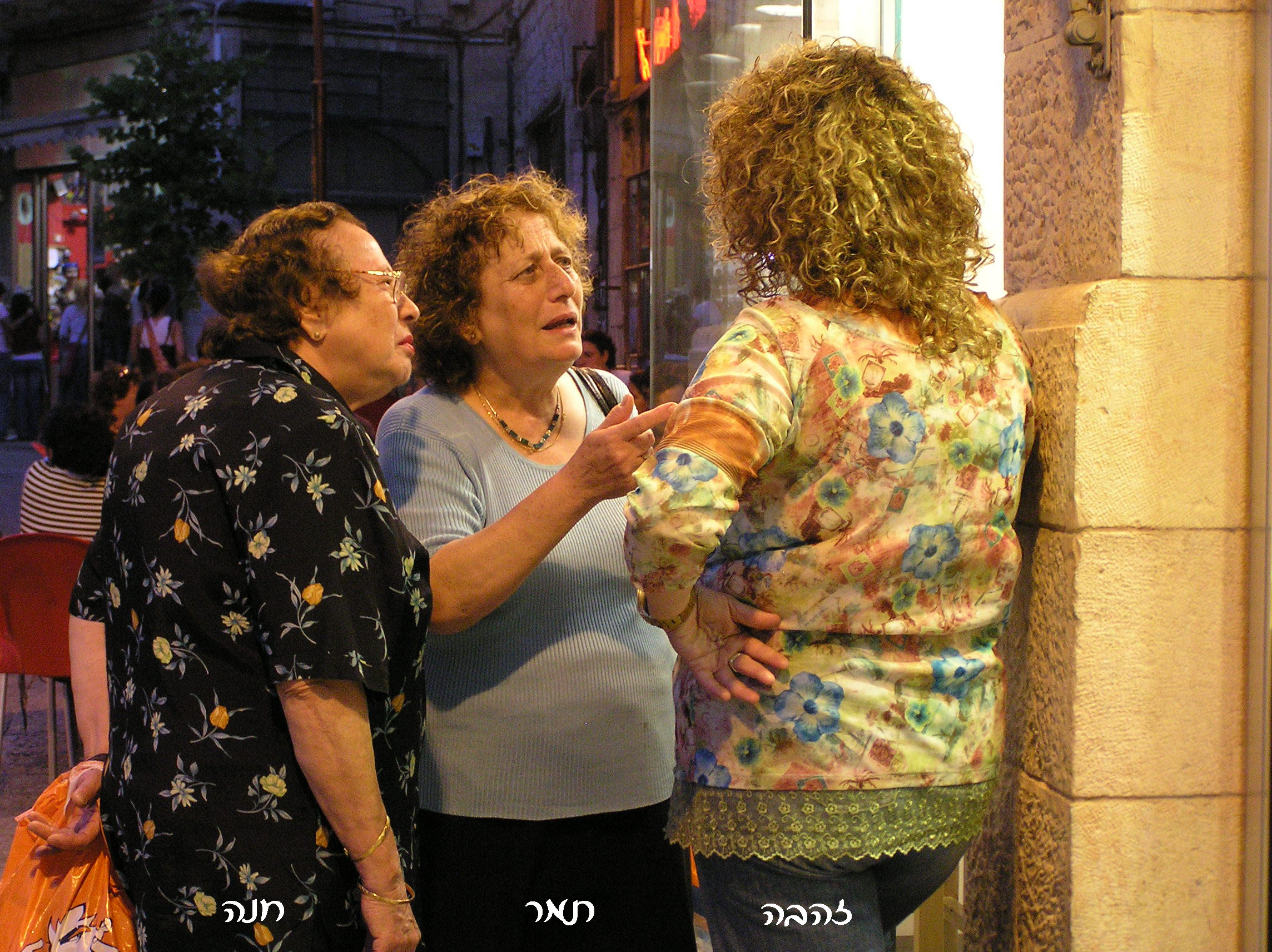זְהבה, תמר וְחנה מְדַבְּרות

100.00 %
האישה בְצד ימין—שְמהּ זְהבה,יותֵר גְבוהה.
היא לובֶשֶת חוּלְצה ציבְעונית וּמיכְנְסי ג'ינְס.
בַיד השׂמאלית יֵש לה טבעת.
אבל אוּליי היא לא נְשׂוּאה.
האישה באֶמְצע לובֶשֶת סְוֶודֶר בְצֶבע כחול בהיר.
יֵש לה שֵׂיער ג'ינְג'י—זׂאת אומֶרֶת, צבע אדום.
יֵש לה תיק חוּם, אבל לא רואים אֶת התיק.
קורְִאים לה תמר. היא לובֶשֶת חצאית בצבע כחול כֵהֶה.
הגְבֶרֶת בְצד שׂמאל לובֶשֶת שׂימְלה שְחורה עִם פְרחים.
שְמהּ חנה. יֵש לְחנה מישְקפיים וְהיא נושֵׂאת תיק כתום.
חנה הכי מְבוּגֶרֶת. גם לה יֵש שֵׂיער קְצת ג'ינְג'י.
הֵן עומְדות על המידְרכה וּמְדַבְּרות.
תמר, האישה באֶמְצע מְנַסָה לְהַסְבּיר מַשֶהוּ לְזְהבה
וְזְהבה לׂא מַסְכִּימה איתה.
| נשים | women | צד | side | ||
| יותֵר גבוֹהּ | taller | ציבְעוני | multi-colored | ||
| מיכְנסיים | pants | אֶמְצע | middle | ||
| טבּעת | ring | קְצת | a little | ||
| שֵׂיער | hair | תיק | bag, purse | ||
| חוּם | brown | גְבֶרֶת | lady | ||
| שׂימְלה | dress | פֶרח | flower | ||
| נוֹשֵׂא, נוֹשֵׂאת | carrying | כתום | orange | ||
| הכי מְבוּגָר | the oldest | מידְרכה | sidewalk | ||
| מְנַסֶה, מְנַסָה | trying | לְהַסְבִּיר | to explain | ||
| מַסְכִּים, מַסְכִּימָה | agree | איתה | with her |
הֶעָרָה
FYI לידיעתך
Hebrew has surprisingly few "foreign" or words borrowed from other languages The Academy of the Hebrew Language has coined many thousands of words for use in Modern Hebrew. You can visit their website! HERE
A foreign word is called מילה לועֲזית